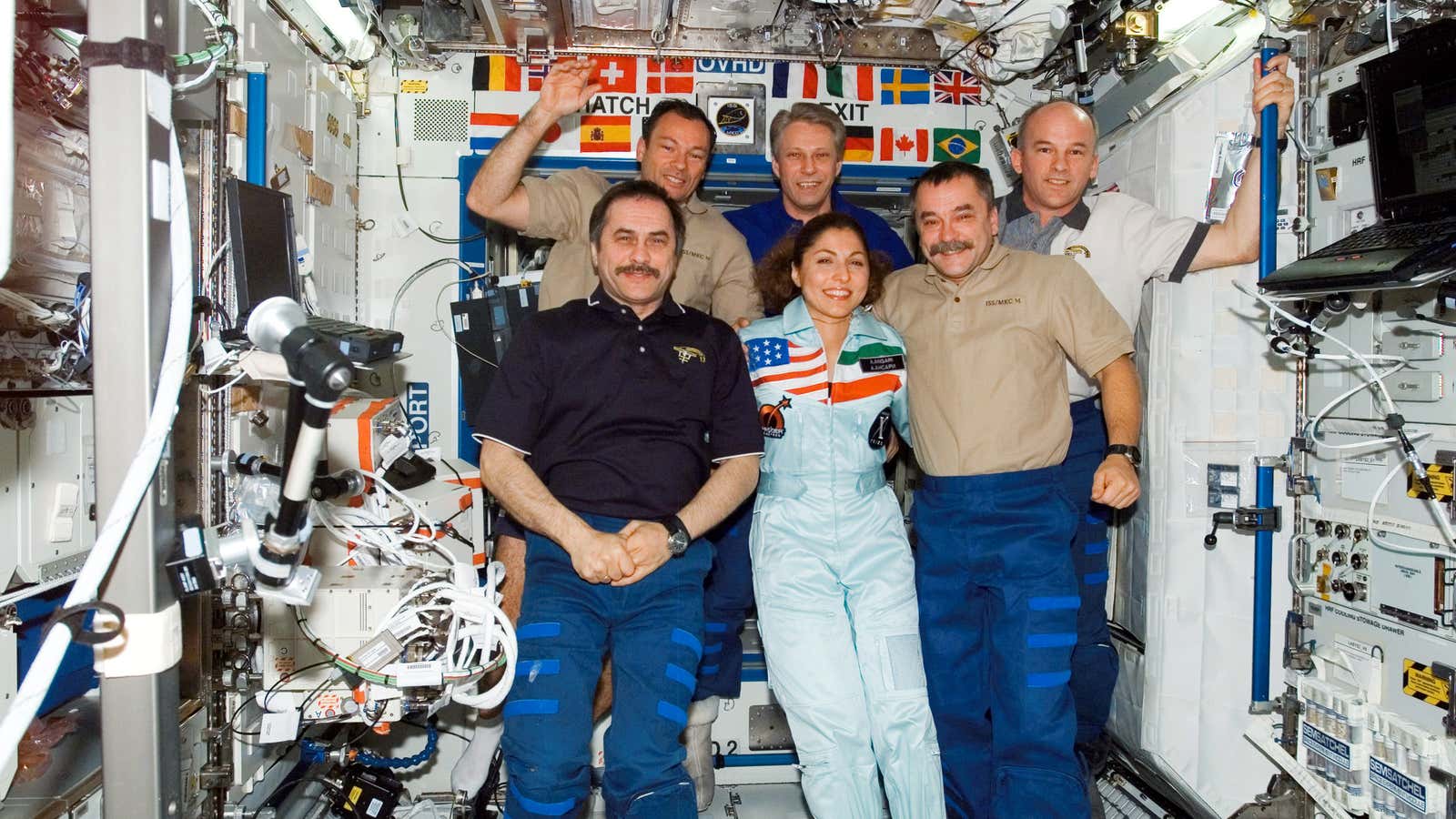NASA officials said today that SpaceX and Boeing would be able to fly private astronauts to the International Space Station twice a year starting in 2020.
“NASA realizes that we need help,” Bill Gerstenmaier, NASA lead space exploration executive, said today during an event at Nasdaq, the tech-heavy stock exchange. “We can’t do this alone. We’re reaching out to the US private sector to see if you can push the economic frontier into space.”
The officials estimated a seat on those rockets would cost about $58 million, and the rent paid to NASA for staying on the ISS and using its facilities would be about $35,000 per day; the maximum month-long stay would cost a space tourist just over a million dollars. The spacecraft can carry five to seven people, who might be tourists, researchers developing products in microgravity, or even filmmakers and marketers looking to take advantage of “the most amazing research facility ever built by humankind,” as Gerstenmaier put it.
The move is part of NASA’s broader push to hand off its work in low-earth orbit to private companies as it pushes into deeper space. It grows from the relatively new NASA approach of hiring space transportation as a service, rather than building rockets and spacecraft itself. With the International Space Station expected to finish its service life sometime after 2028, the agency wants to transition to a future where private companies also operate space stations, so that NASA will be just one customer among many.
“SpaceX was founded with the goal of helping humanity become a spacefaring civilization,” Gwynne Shotwell, the company’s president, said in a statement. “We are looking forward to work with NASA and other commercial partners as we open up low Earth orbit to an exciting new chapter of human exploration.”
NASA CFO Jeff DeWit cast the move as a way to bolster NASA’s Artemis program, which would return astronauts to the moon in 2024. But he had no estimate of how much money the new activities would earn, and back-of-the-envelope calculations suggest that it is unlikely to make a dent in the billions it costs to operate the ISS or will be required to accelerate the lunar mission.
Prior to the loss of the space shuttle Challenger in 1986, corporations and other organizations could sponsor “payload specialists” for missions on the space shuttle. After the construction of the ISS, Russia accepted payments from tourists who wished to visit, including Cirque du Soleil co-founder Guy Laliberte, video-game designer Richard Garriott, and aerospace executive Anousheh Ansari.
Since the Shuttle Program ended in 2011, the only method of sending astronauts to the space station has been the Russian Soyuz rocket, limiting opportunities for space tourism. The current effort will be enabled by new spacecraft built by SpaceX and Boeing as part of NASA’s commercial crew program.
Neither company’s vehicle is ready for operations, with Boeing’s Starliner appearing likely to fly first while SpaceX continues to investigate a test anomaly with its Crew Dragon spacecraft. Gerstenmaier said private missions could begin if only one provider was available on time.
A Boeing spokesperson said the company was prepared to support two flights to the ISS in 2020, and is working with the tourism company Space Adventures to fill the fifth seat in its Starliner, alongside four astronauts. Bigelow Aerospace, which has already installed one module on the ISS, said in a tweet that it had put down deposits for 16 passengers to fly to the International Space Station on SpaceX rockets, though SpaceX could not confirm that immediately.
The agency also announced it had set a policy for commercial use of station resources so companies will know how much it costs to fly cargo and people to the ISS, live there, and even use its internet connection. While some 50 companies are already doing research on the space station, the new policy will allow for actual for-profit work and marketing activities, which are currently banned.
“The devil is in the details and the stakes are high,” Jeffrey Manber said in a statement. His company Nanoracks has long worked on the ISS, and he led an effort to privatize the Mir space station at the turn of the century. “We face competition from not only non-market space programs, but from global space agencies embarking on the same commercial pathway. If we get this wrong, America’s robustness in space may be in jeopardy.”
Looking forward, NASA said it would allow companies to seek an opportunity to attach their own module to the ISS to demonstrate the potential of commercial facilities in low-earth orbit, and also solicit proposals for free-flying private orbital labs. These plans have been informed by studies performed by a dozen companies (pdf) to understand the potential return on investment in low-earth orbit.
Virgin Galactic and Blue Origin, founded by Richard Branson and Jeff Bezos, respectively, plan to offer space tourism services, but their rockets can only carry passengers to the edge of space for a few minutes, not into orbit around the planet.
Correction: The original story reported that only twelve companies were eligible to add a module to the ISS; any company can respond to NASA’s request.
